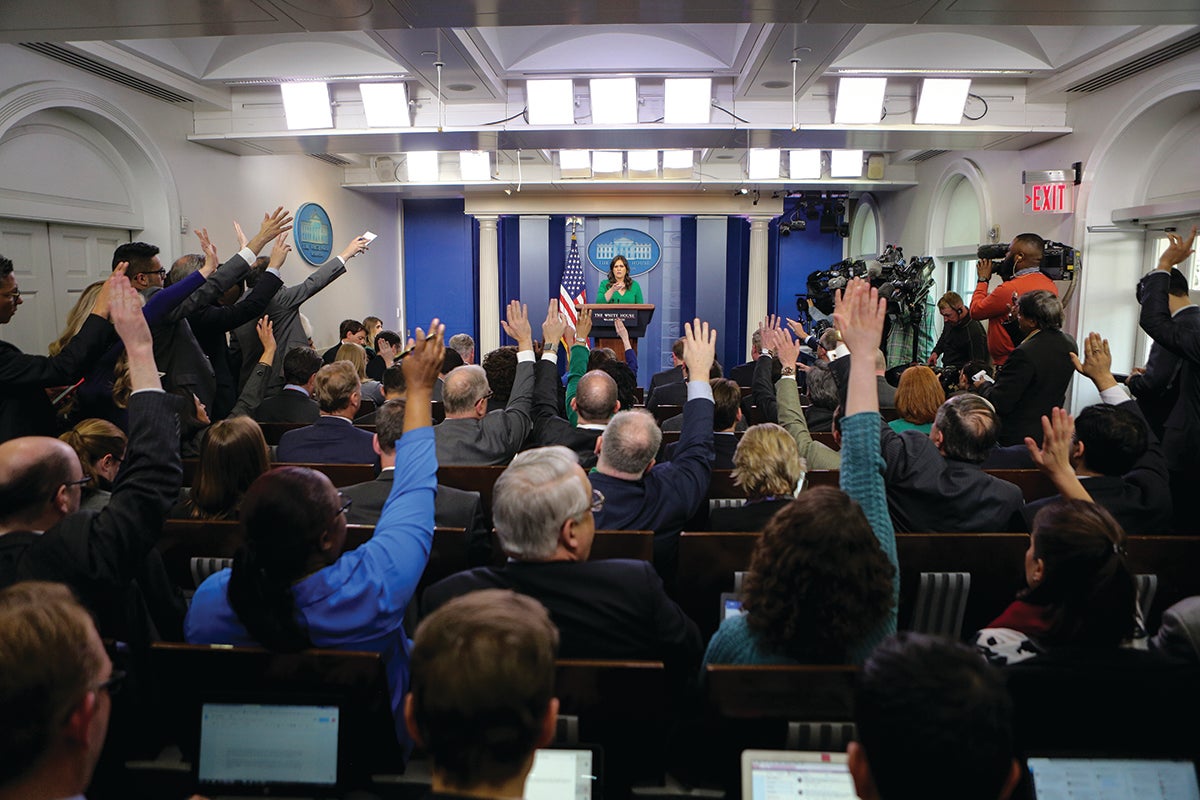Few things seem to bug American conservatives more than the (liberal, biased, dishonest—choose whatever adjectives you want) mainstream media.
You know who I’m talking about: The New York Times, The Washington Post, the TV networks and their progeny, and the frequently holier-than-thou progressive print and online opinion platforms and blogosphere.
And that just scratches the surface. From coast to coast, in red and blue states alike, most big city newspapers, most state capital newspapers, and many small- and mid-sized newspapers lean Left, as do most environmental reporters and publications, many of the people writing on education and health care, and many of those reporting on statehouse politics and foreign policy. Even the popular large-circulation women’s magazines fall into this category. In the case of editorial and opinion pages, in print and online, it’s permissible. But the same biases also can be seen in news coverage as well.
For example, news reporters—even when they’re trying to be fair and objective (which is most of the time, I think)—are more prone to aggressively challenge individuals and organizations on the Right than individuals and organizations on the Left.
What they write often ends up being slanted. A recent Associated Press story, for example, led with the following: “Charter schools are among the nation’s most segregated, an Associated Press analysis finds—an outcome at odds, critics say, with their goal of offering a better alternative to failing traditional public schools.”

DAILY BRIEFING at the White House. (credit: OLIVER CONTRERAS/SIPA USA/NEWSCOM)
This suggests that the mission of charter schools, at least in part, is to create a learning environment with a different racial or ethnic makeup than the public schools in the community, an outcome I’ve never seen suggested. Parents don’t choose charter schools so their children can sit in classrooms with higher percentages of kids from other racial and ethnic backgrounds; they choose charters because they think they’ll provide a better education. The entire premise of the story, which was likely “pitched” to AP by anti-charter school activists, is cockeyed. You can find similarly slanted stories such as this—on budget, economic, environmental, foreign policy, legal, and social issues—every day.
Another problem: While reporters don’t mean to call us names, they routinely do, usually by labeling us or suggesting that we’re bought and paid for by our donors.
Start building relationships now and, when you have something important to peddle, they’re much more likely to pay attention.
We’re the “right wing” or “conservative” Americans for Prosperity, Competitive Enterprise Institute, John Locke Foundation or Pacific Research Institute. Our counterparts on the Left rarely are labeled; they’re just the Center for American Progress, Center for Budget and Policy Priorities, and Economic Policy Institute. This even applies to the Southern Poverty Law Center, to which the media turn as the reigning authority on U.S. “hate groups,” a designation the SPLC has obligingly bestowed on a number of perfectly respectable organizations on our side, such as the Family Research Council. You see how the game is played?
Oh, and by the way, did I mention that we’re funded by “corporate interests,” or by large chemical, pharmaceutical, or energy companies—or even worse, by the Koch brothers? Yet, there’s rarely any mention of the other side’s funding.
What can we do about this media malpractice?
The Trump White House responds in kind, calling the media names—the “failing New York Times,” for example—and accusing them of manufacturing “fake news.”
Perhaps the White House can afford to play such games. The White House has a unique platform and a captive audience. After all, journalists are required to cover every move the president makes, including every twitch of his Twitter finger.
The rest of us don’t have that luxury: We have to sell our ideas—and even when the media are not hostile or skeptical, they typically show little interest in what we believe or what our research shows.
Is there anything we can do to change that?
The answer, of course, is yes; and you should have started doing it yesterday.
Media relations should be a continuing, permanent activity and a major part of any communications program. And frankly, the best way to get mainstream journalists to care about what you do, what you think, and what you have to say is to get them to care about you, and trust you.
You do this by establishing relationships with people: reporters, editorial writers, columnists, op-ed editors, talk show hosts, bookers, producers, and anyone else in the news business who might be helpful to you—even if they’re unrepentant lefties.
Get to know their job responsibilities, what their typical day is like, what the best time (and the worst time) is to contact them, and what subjects or angles most interest them.
Get to know their likes and dislikes, and their spouses’ or significant others’ likes and dislikes. You’ll probably discover shared interests: in art, music, sports, restaurants, the local dog rescue.
If they work for a newspaper or magazine, read it—and read it regularly. If they work in radio or television: listen, watch. Don’t wait until you have something to pitch to contact them. Start now. For the cost of an occasional cup of coffee or a sandwich or two, even the smallest organization with the tiniest budget can have an ongoing program.
But be mindful that their time is limited. The mainstream media have been battered financially in recent years. This has resulted in waves of buyouts and layoffs. Newspapers that had five or six editorial writers in the past, each with a specialty, may now have just one or two trying to do it all. Reporters may be covering several beats. While the Times, Post, The Wall Street Journal and a few others still have large staffs, most others don’t. So try to find ways to spend time with journalists without taking up their work time. Invite them to your house for dinner, for example. Offer to take them to a ballgame. (Even if they turn you down, they’ll probably remember the offer.)
The best way to get mainstream journalists to care about what you do, what you think, and what you have to say is to get them to care about you, and trust you.
Start building relationships now and, when you have something important to peddle, they’re much more likely to pay attention. You’ll know, through trial and error, who’s open-minded and accessible and who’s a lost cause. Your time is limited and valuable as well, of course; so don’t waste it on the jerks—regardless of their ideology—who are always “too busy,” perhaps because they consider themselves too important, to meet with you.
When I was at The Heritage Foundation, people would ask me what I thought of various public relations firms. I couldn’t tell them. I would say: “I don’t know anybody in PR. All my friends are journalists.” And many of these friends, then as now, are left of center.
Which raises an obvious question: Do you pitch stories differently to left-leaning reporters and opinion-writers than to neutral and right-leaning reporters? Of course you do. You might send them both a copy of the same report and the same news release, but the notes you send them—or the conversations you have with them—probably will differ, both in language and tone. You would never say to a left-leaning reporter: “This will drive the lefties crazy.” But you might say that to a conservative writer who you know well.
Most of the people who work for the mainstream media are left of center, and proud of it. But that doesn’t mean you can’t establish a productive working relationship with at least some of them.
The choice is yours: You can call them names, as the White House does, or you can call them up, as I’ve chosen to do. The latter option is much more pleasant and productive.
Mr. Berkowitz is a public relations consultant residing in Wilmington, N.C. He headed The Heritage Foundation’s communications program from 1977 to 2002. Since 2003 he has worked with his daughter, Jennifer Berkowitz Schell, president and CEO of Proactive Solutions, Inc., a public relations firm based in Santa Fe, N.M.
